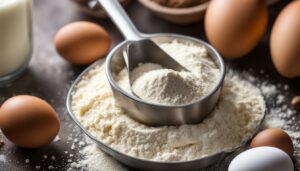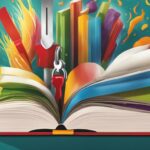Originally posted on January 17, 2023 @ 6:33 am
Macaroni and cheese, the quintessential comfort food that warms the hearts and palates of people across generations, is a dish that transcends time and trends.
While its basic concept remains straightforward, the myriad ways to personalize and elevate this classic dish are remarkable.
At the heart of a delectable macaroni and cheese recipe lies the art of creating a perfect roux—a skill that can elevate your dish to new heights of creamy decadence.
Contents
- 1 The Roux: The Magic Thickening Agent
- 2 The Alchemy of Roux: A Dash of Science
- 3 Crafting the Perfect Roux: Tips and Tricks
- 4 Roux Revelations: Exploring Variations
- 5 Bringing It All Together: Incorporating the Roux into Your Recipe
- 6 The Culmination: Cooking Your Macaroni and Cheese
- 7 Troubleshooting Triumphs: Navigating Mac and Cheese Hurdles
- 8 In Conclusion:
- 9 FAQs
- 9.1 1: Can I use gluten-free flour for the macaroni and cheese recipe roux?
- 9.2 2: Can I adjust the amount of roux if I prefer a thicker or thinner macaroni and cheese sauce?
- 9.3 3: Is there a way to make the roux in advance and store it for later use?
- 9.4 4: Can I use plant-based ingredients to make roux, macaroni, and cheese?
- 9.5 5: What can I do if my roux becomes lumpy or grainy?
The Roux: The Magic Thickening Agent
When a macaroni and cheese recipe calls for 1/3 cup of flour, it’s the foundation for crafting the essential roux. This culinary cornerstone is a harmonious marriage between flour and butter, cooked until it transforms into a golden-brown concoction.
Why is the roux so crucial? Its primary role is to lend the sauce its desired thickness and impart that characteristic velvety texture that sets remarkable macaroni and cheese apart.
Also read: How to Bake Perfect Cookies?
The Alchemy of Roux: A Dash of Science
The science behind roux is simple yet fascinating. As flour dances in sizzling butter, the starch molecules within the flour disintegrate and create a gel-like structure.
This gel is the unsung hero that lends macaroni and cheese its luscious, creamy texture. But there’s more—a touch of culinary alchemy that affects not just texture but also color.
A pale roux leads to a sunny yellow sauce, while a darker roux yields a richer hue to the final dish.
Crafting the Perfect Roux: Tips and Tricks
Creating a sublime roux requires a dash of skill and patience. Before introducing the flour, begin by ensuring your butter is melted and sufficiently hot.
This step is crucial to prevent those pesky flour lumps. Opt for medium heat and stir diligently as the roux forms, preventing it from browning too quickly.
Finding that sweet spot between undercooking and overcooking is key—aim for a gentle, golden-brown hue for that ideal mac and cheese.
Roux Revelations: Exploring Variations
While the traditional roux calls for flour, don’t hesitate to explore alternatives. Cornstarch can be a worthy substitute, particularly if you desire the cheese’s flavors to shine unobstructed.
Alternatively, blend flour and cornstarch for a thicker, more substantial sauce. These adaptations allow you to tailor your macaroni and cheese to your preferences.
Also read: Macaroni and Cheese Recipe
Bringing It All Together: Incorporating the Roux into Your Recipe
As your roux takes shape, it’s time to seamlessly meld it with milk and cheese to craft the sauce that will embrace your macaroni. While the quantities may fluctuate based on your roux’s yield, a general guideline is 2 cups of milk for every 1 cup of roux.
This ratio ensures a harmonious marriage of flavors and a texture that dreams are made of. Don’t shy away from experimenting with additional ingredients such as mustard, cayenne pepper, or a medley of herbs to add that personal touch.
The Culmination: Cooking Your Macaroni and Cheese
With the sauce prepared, introduce the cooked macaroni into the mix and gently stir, ensuring every nook and cranny is coated with creamy goodness.
The final step involves transferring your masterpiece into a generously greased baking dish. The flavors meld, and the anticipation heightens as it bakes to a golden-brown perfection.
Encountering a culinary hurdle is no cause for alarm—rather, an opportunity to refine your skills. If your macaroni and cheese seems excessively thick, introduce more milk or cream to restore balance.
Conversely, a dash more roux can work wonders if the sauce appears a tad thin. Lumps need not be the bane of your existence; employ a blender or food processor to achieve that desired smoothness.
In Conclusion:
While crafting macaroni and cheese isn’t akin to solving a Rubik’s Cube, mastering the art of the roux elevates this dish to culinary artistry.
By absorbing the science behind the roux, embracing variations that suit your taste, and navigating the creation of a seamless sauce, your macaroni and cheese will transform into a palate-pleasing masterpiece.
Troubleshoot with confidence, knowing that culinary missteps only steer you toward mastery. With these insights, embark on your macaroni and cheese journey, creating a symphony of flavors and textures that resonate in every creamy bite.
FAQs
1: Can I use gluten-free flour for the macaroni and cheese recipe roux?
Absolutely! If you want to make your macaroni and cheese gluten-free, you can substitute the traditional wheat flour with a gluten-free flour of your choice. Common options include rice flour, almond flour, or a gluten-free all-purpose flour blend.
2: Can I adjust the amount of roux if I prefer a thicker or thinner macaroni and cheese sauce?
Certainly! The amount of roux in your macaroni and cheese recipe can be adjusted to suit your preference for sauce thickness. If you desire a thicker sauce, you can increase the roux slightly. Conversely, reduce the roux quantity a bit if you prefer a thinner sauce.
3: Is there a way to make the roux in advance and store it for later use?
Absolutely. Making roux in advance is a clever time-saving technique. Prepare the roux as usual, let it cool, and then transfer it to an airtight container. Store it in the refrigerator for up to a week. When ready to use it, gently reheat the roux in a saucepan and gradually whisk in your milk and cheese to create the sauce.
4: Can I use plant-based ingredients to make roux, macaroni, and cheese?
Absolutely. You can still indulge in a delightful macaroni and cheese following a vegan or plant-based diet. Use plant-based butter or margarine for the roux, and opt for non-dairy milk, such as almond milk, soy milk, or oat milk. Various vegan cheese alternatives are available for the cheese component, ranging from nut-based varieties to those made from plant proteins.
5: What can I do if my roux becomes lumpy or grainy?
Encountering lumps or a grainy texture in your roux can be frustrating, but fear not—it’s fixable. If you notice lumps forming as you whisk in the flour, pause and remove the saucepan from the heat. Gradually add the liquid (milk) while whisking vigorously to break down the lumps. If lumps persist, you can strain the mixture through a fine-mesh sieve to remove any clumps before continuing to cook.








